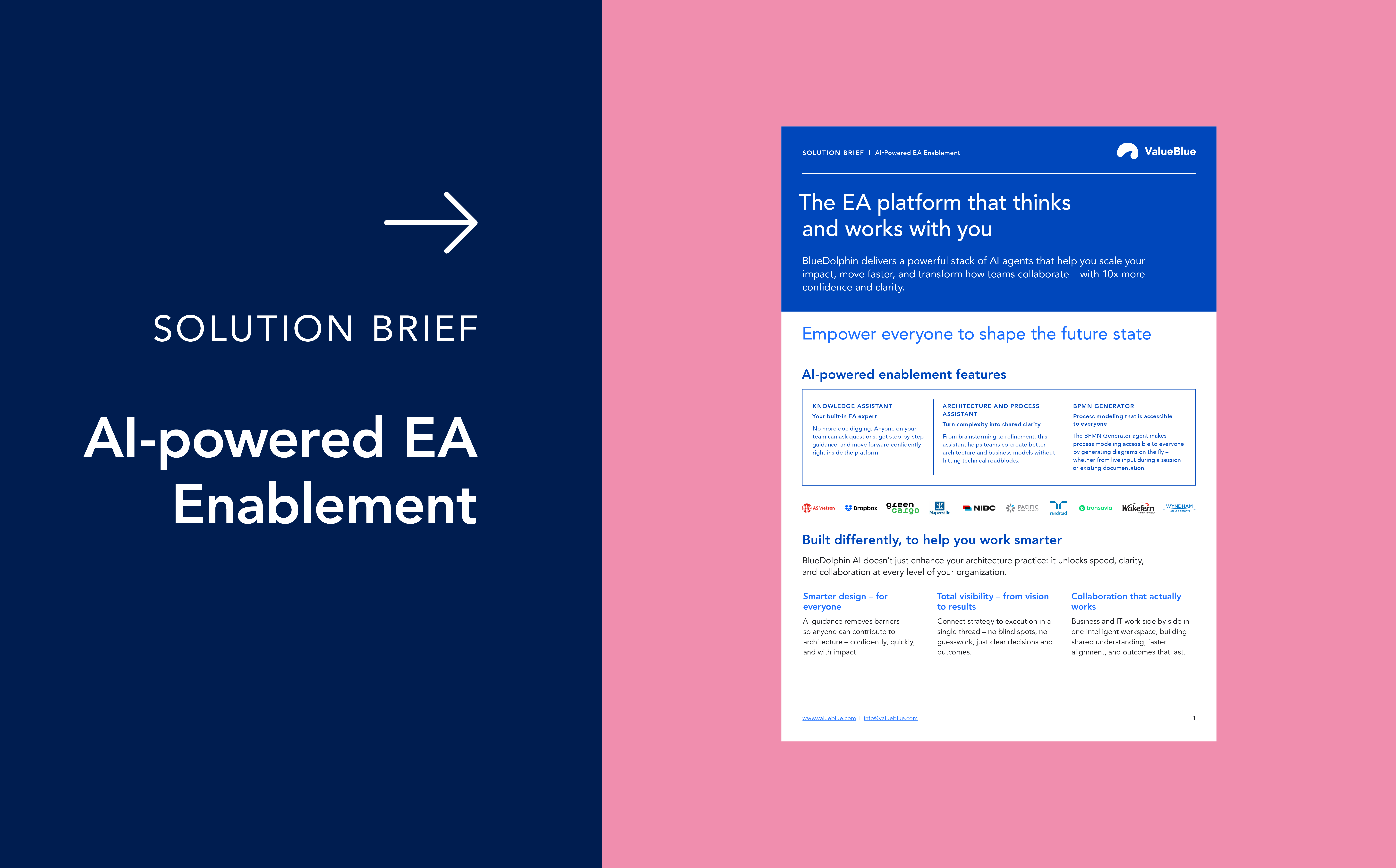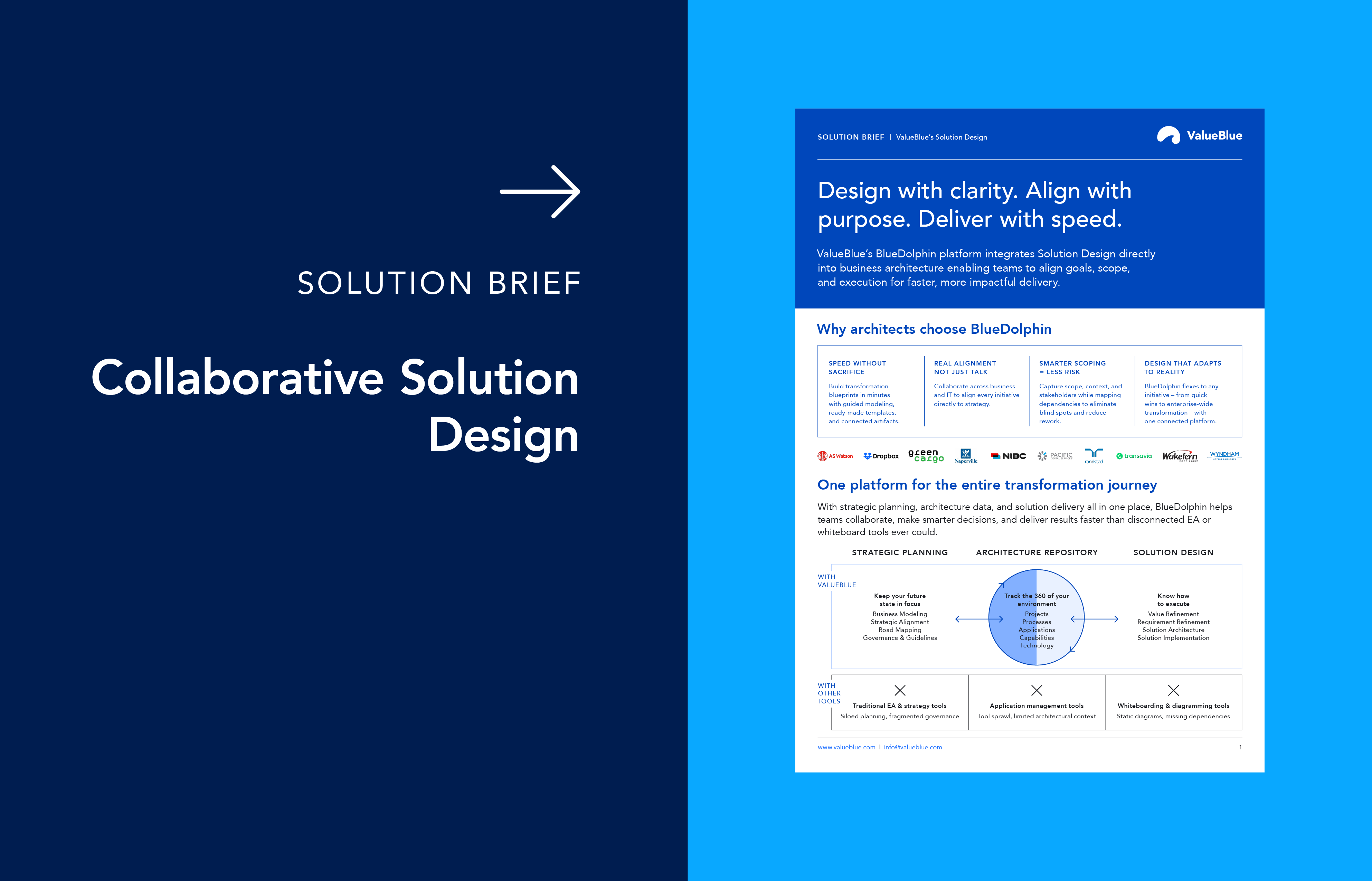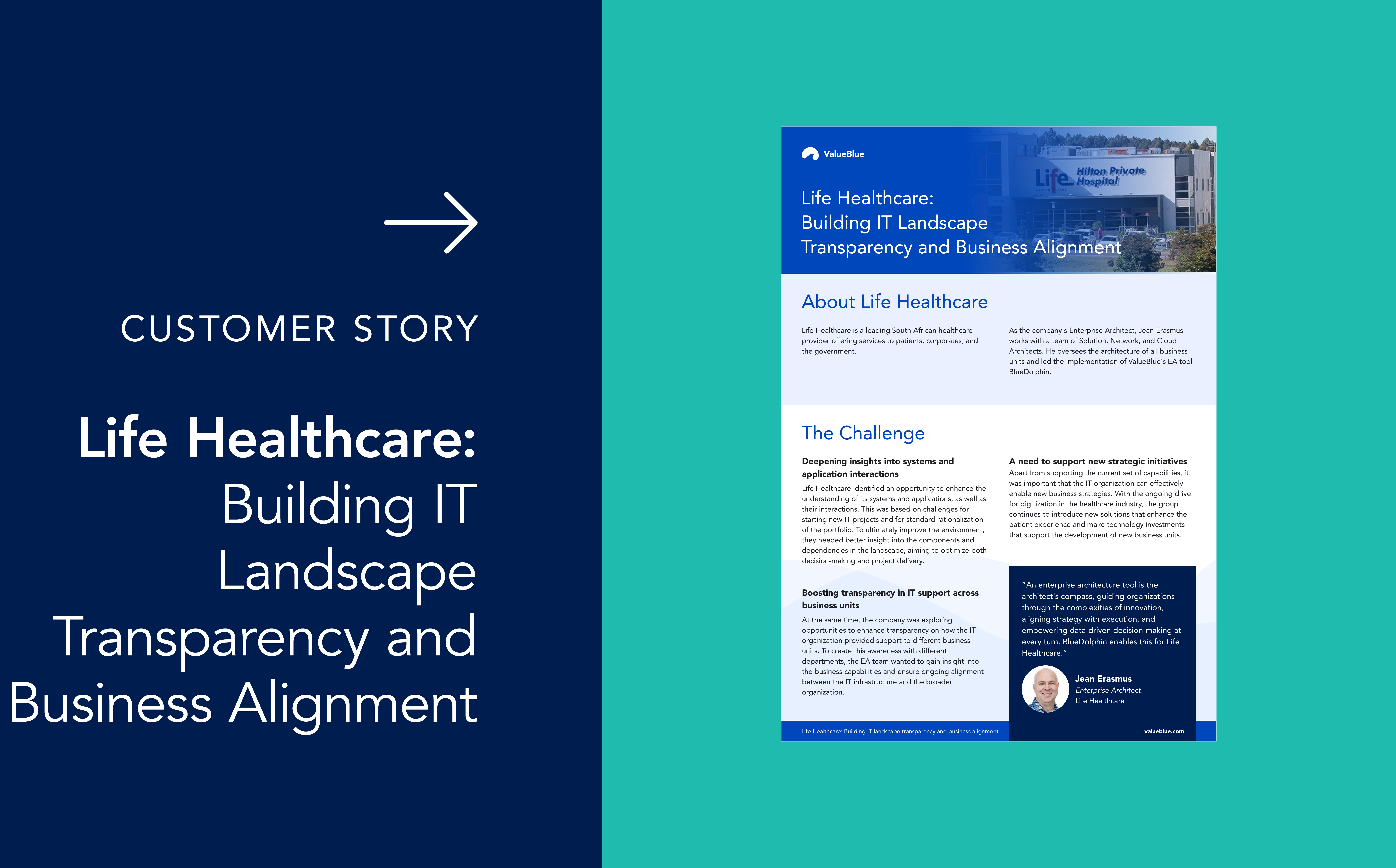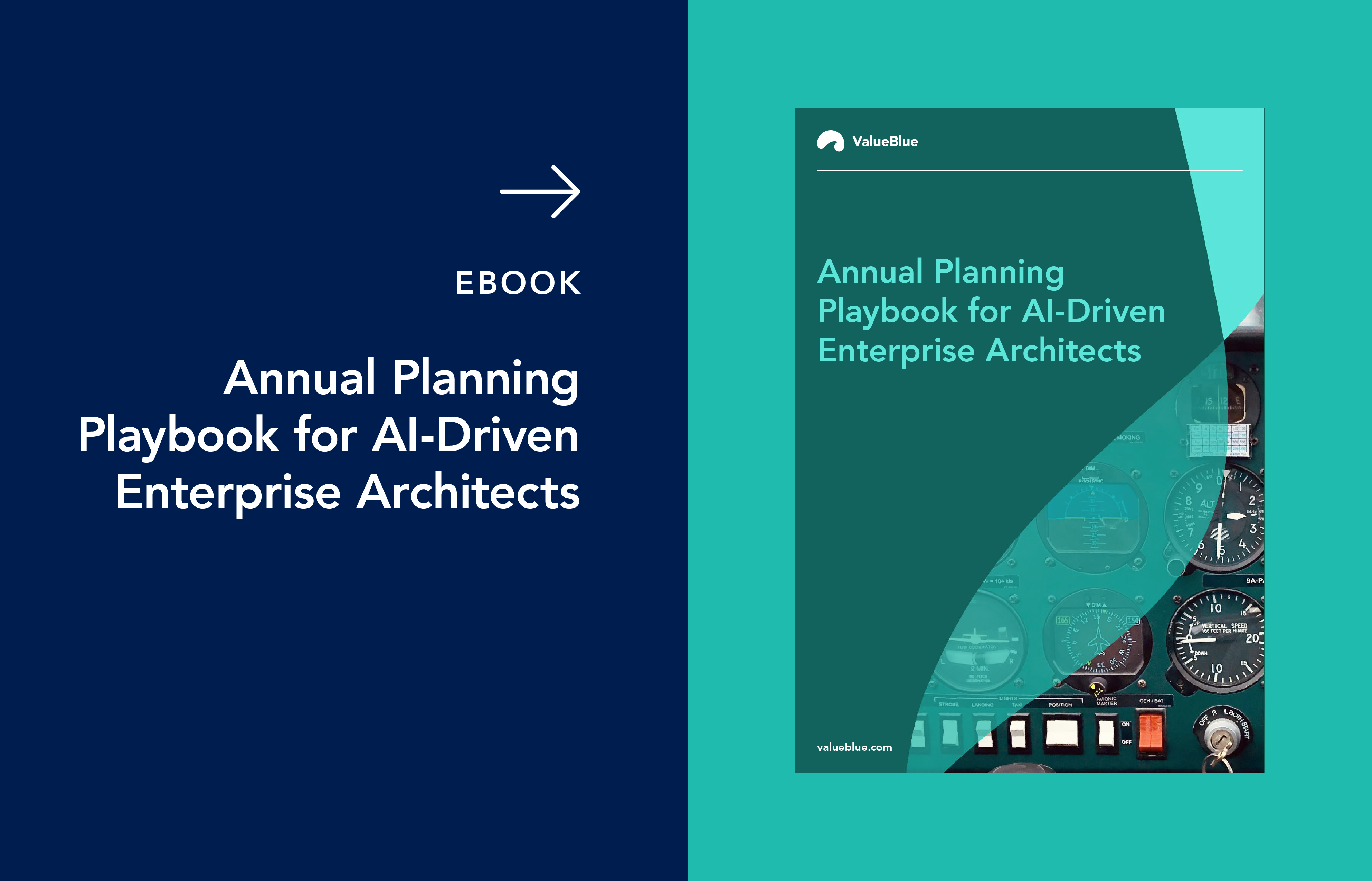Why Early Stakeholder Involvement Drives Transformation
Business – or digital – transformation is a continuous process driven by market changes, changing customer demands, and disruptive innovations. Real digital transformation requires holistic changes in the business model. Maintaining relevance and succeeding in a fast-changing business environment is essential, yet in many cases, it doesn't lead to desired results. Most companies spend over 50% of their IT budgets on transformation projects. Somehow, 70% of projects exceed planned time and budget, only 31% of the expected revenue increase, and only 25% of expected cost savings are realized.
The problem stems from ineffective management of both planning and execution, and one main reason is that enterprise architects are not involved early in the process.
Benefits of having enterprise and solution architects early in the process
A key product development and innovation trend is ‘shift left’ - making key decisions early to minimize rework and rollback. Rather than waiting until later stages, when the project is defined and all key choices are made, decision-makers should involve solution architects and design experts early in the development lifecycle. This will help the organization adopt a structured approach to solution design, improving the quality of solution designs from the start. More importantly, the EA team will help stakeholders remember the context and rationale behind a project, something that the solution designers' team will find most helpful when implementing change. After all, enterprise architects are supposed to bring efficiency and alignment between business and IT, so why not let them?
The “shifting left” approach helps to identify and resolve potential issues sooner, resulting in fewer delays, reduced costs, and better alignment with business needs. Allowing an organization to “fail fast” makes it possible to observe and deal with potential hurdles when the initial investments (money, time, effort) are still low, thus minimizing the need for rework later.
Also, by involving the architectural team earlier, companies achieve a triple payoff:
- Individuals or teams can show their value from the first initiative rather than at a later stage, when it slows down the whole process.
- The business gets value from the EA team much sooner.
- The speed of change increases as an architect’s early involvement becomes an accelerator instead of a handbrake when it comes to effecting change.
An example of how EA can improve digital transformation planning
Let’s illustrate it with an example. Perhaps your company is a retailer, and the team is discussing the high-level design for global 24/7 omnichannel support:

The above diagram describes the customer journey and back-office activities that follow them: warehouse management, logistics, and delivery at the end of the chain. It uses free-format drawing, storyboards, pictures, text, and icons to communicate complex ideas effectively to technical and non-technical stakeholders. As the enterprise architect got involved in the conversation with the team at the very beginning, it created a shared understanding of an envisioned solution and identified possible issues. In the above example, the architect even blended some formal Archimate architecture objects for a first impact and feasibility analysis.
It all improves the chances of this transformation to succeed. Remember: if only 31% of projects deliver the value they should – as established by McKinsey – even a tiny alignment with the EA can significantly impact the success of your digital transformation.
How do you get a seat at the digital transformation table?
To ensure your architecture team gets involved early enough, you must take the initiative and sell your team to the rest of the company. Make them realize that including enterprise architects in transformation planning and project execution is not an extra hurdle that will slow down the process, but the opposite – it will speed things up.
- Steer away from the conversation about technology and talk about business value. Discuss the cost savings, competitive advantage, long-term benefits, business agility, and so on resulting from having the process adequately conceived. To illustrate your point, walk them through their current initiative from your perspective and show them visually how they could discuss the same ideation with the same stakeholders but in a single repository. Then, connect these dots to an architectural approach and illustrate how your participation changes nothing in their workload or complexity but adds multiple efficiencies.
- Aim for a quick win. Consider how you can provide short-term tangible results and value with a small project, e.g., replacing a single application that affects only one department. That will show your stakeholders the value of what you do to your business transformation. Also, it will win you some trust, which is essential for securing your future involvement early on.
- Bring your human factor to the table and be collaborative and proactive. Anticipate and signal your stakeholders’ needs, acting more as an enabler rather than a gatekeeper who imposes architectural decisions.
- Stay flexible; keep it pragmatic and lightweight. Apply industry frameworks (e.g., TOGAF, Zachman) that resonate with the organization’s specific context and priorities. Choose a flexible EA tool that can help you mature your EA capability.
Ready to transform?
When embarking on your digital transformation journey, ensure you’re equipped with the best tool for the job – one that supports both transformation planning and project execution in a central, real-time collaboration, enforces a clear and structured approach, and empowers your team with easy-to-use solution design tools.





